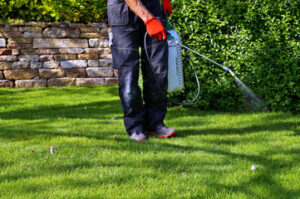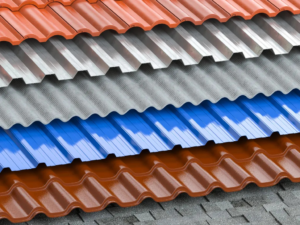Why You Should Hire a Fencing Company
Fences are a great way to add privacy, keep pets and children safe, and define property lines. A good fencing company can install wood, vinyl, aluminum, and more. They’re also able to recommend the best type of fence for your specific climate and needs.

When selecting a fencing contractor, it’s important to ask the right questions. Contact Fencing Company Summerville SC for professional help.
When you hire a local fencing company, you’ll likely enjoy faster response times and more convenient service. This is because these businesses are familiar with your community’s unique requirements, saving you from potential legal complications down the road. Additionally, they’re also familiar with your local building codes and zoning laws, making it easier for them to complete projects on time.
The Company Description section is where you delve deeper into your company’s goals, ethos, and niche in the industry. This is your opportunity to paint a vivid picture of your company, highlighting its advantages in the market and establishing credibility. Your company description should include a detailed market analysis, a list of products and services, and the benefits your business provides to customers.
A professional fence is an effective way to protect your property and keep it safe from intruders, as well as reduce noise pollution from neighbors. In addition, a fence can provide privacy and help you get the restful sleep you need. A professional fence installer will be able to recommend the best options for your home and budget.
Many fence companies are seasonal, with higher demand during certain times of the year. This can cause financial fluctuations, so it’s important to conduct thorough research and seek professional financial advice before launching your franchise. This will ensure you have a strong understanding of the investment costs and return on investment for your specific franchise model.
In addition to ensuring your business meets regulatory requirements, it’s essential to understand the tax implications of a fencing franchise. There are several factors to consider, including self-employment tax, payroll tax for employees, and sales tax. Be sure to consult with a tax advisor to fully understand these obligations and ensure you’re prepared for the challenges ahead.
They’re Experienced
Fencing companies are staffed with fencing professionals who know their trades inside and out. Their years of training have taught them the nuances of the job, such as how to properly install fence posts and panels, or how to keep fence materials looking new for years. Those skills aren’t easily picked up from an online tutorial or weekend project. The best way to ensure your fence looks its best is to hire a professional right from the start.
Fences serve a number of purposes, from keeping pets and children safe to adding aesthetic appeal to your home’s curb appeal. A high-quality fence can also increase your property’s value. However, many homeowners aren’t sure if they can afford a new fence or are afraid of installing the fence incorrectly. When you work with a fencing company, they can help you find the best fence for your needs while staying within budget.
The first step in working with a fencing company is to ensure the contractor is licensed and insured. This will protect you from unlicensed contractors who may perform rookie mistakes on your property. You can check this information by requesting copies of their licenses or insurance certifications before beginning the process of finding a fencing company for your project.
In addition to being licensed and insured, a fencing company should be well-versed in local laws and regulations related to fencing. If you choose to work with a fence company that doesn’t understand your local laws and regulations, you could end up with a fine or even the need to remove your fence altogether. A reputable fencing company will be able to guide you through the planning and permit process, as well as help you get your fence built safely and legally.
When you’re deciding on a fencing company, ask them how long they have been in business and if they have experience with the type of fence you need. This will give you an idea of their level of expertise, as well as their ability to meet and exceed industry standards for your fence.
They’re Saved Time
A fence adds safety, privacy and security to a home. It also increases the curb appeal and value of the property. However, a homeowner needs to carefully consider the costs involved in a fencing project before making any decisions. It is important to evaluate long-term costs in addition to the initial purchase price, such as maintenance and repair expenses. A fencing company can help a homeowner weigh these options and choose a plan that will fit within their budget.
Choosing the right materials for the fence can significantly decrease maintenance costs and extend its lifespan. For example, choosing a low-maintenance material such as vinyl can save homeowners money and effort in the long run. In addition, selecting the right gate hardware can minimize repair bills. For instance, using a high-quality gate hinge and latch eliminates common failure points, such as loose hinges and broken catches. Additionally, a quality gate kit will include all the necessary components for the job and provide simple installation instructions to reduce labor cost and time.
Inexperienced DIY homeowners may make mistakes during the construction process, leading to additional costs down the road. These errors can range from mismeasured posts to uneven panels. A professional fence installer will have the skills and experience to avoid these mistakes. Professionals will also have access to specialized tools that are not available to the average homeowner. This will save homeowners from having to rent or buy their own tools, which can be expensive in the long run.
A good fence can deter intruders and unwanted guests from entering your property. It can also protect your children, pets and livestock from escaping the property. If you live in a neighborhood where there is a lot of noise, a fence can help you sleep better at night.
In addition to ensuring that the fence meets local building codes, fencing contractors can assist with other paperwork and permit processes. They can also advise a homeowner on any potential issues with the property line. This can save a lot of time and headaches in the future, especially if you are planning to sell your home.
They’re Saved Money
If you’re a fencing company, installing fences for homeowners can be a lucrative way to earn an income. Many people are eager to have a fence on their property to protect it from the elements, intruders, and pets. They also want to boost their property’s value, which a new fence can do. It’s important to work with a contractor that has the right credentials and experience to provide high-quality work. You should check out reviews and ask for references before making a decision.
If a homeowner decides to build their fence on their own, it can take weeks or months for them to complete the project. A professional fence company can save a lot of time by getting the job done quickly and efficiently. The professionals will have already done a lot of the planning, gotten the necessary permits, and acquired the materials they need before starting the installation process. This can help to reduce the overall installation timeline, which means that a homeowner will save money in the long run.
One of the biggest reasons why homeowners choose to do DIY fencing projects is because they think it will be cheaper than hiring a professional fence company. While it may be cheaper at first, the costs of buying or renting equipment and the time spent on the installation can add up.
Fencing companies also have access to specialized equipment that is not available at home improvement stores or big box hardware stores. This can include things like power tools and augers, which are usually too expensive to purchase or rent for a one-time project. They also have access to a wide range of different woods and other materials, which can often be more affordable than what’s available at a big box store.
Another advantage of working with a fencing company is that they can save homeowners money in the long term by doing regular maintenance on their fences. This can prevent minor issues from escalating into major problems that require costly repairs or replacements. During these maintenance visits, the fencing company can also look for any signs of wear or damage that could indicate a need for future repairs or replacements.








